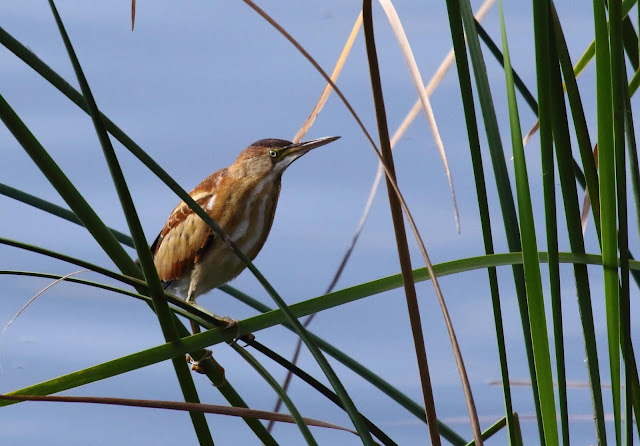I see Least Bitterns only about once per year in San Diego County. They are year-round residents in dense cattail marshes. Another resident species sharing this habitat is Common Gallinule, which I see only about 5 times per year. My lack of seeing these birds has more to do with where I go birding than their true abundance. Nevertheless, if gallinules can hide in the dense cattail pond edges, Least Bitterns are especially secretive.
Only 11-14 inches from bill tip to tail tip, it is the smallest heron in the western hemisphere, and one of three smallest in the world. They are more often seen than heard, giving cooing calls at dawn and dusk. Thus, I was delighted to find and photograph this bird on a recent birding excursion.
 |
| 1/1250, f/8.0 @400mm, 640 ISO |
 |
Least Bittern. Dixon Lake, Escondido, California. June 29, 2018.
1/1250, f/8.0 @400mm, +1 exposure (=>1250 ISO) |
Comparing the two photos, the lighting on the lower photo is better, brighter. The upper photo is what the camera chose for ISO when I selected 1/1250 of a second to stop any bird movement or camera shake and f/8.0 to give enough depth-of-field to make sure the entire bird remained sharply in focus. However, because the bird is somewhat backlit by the sky-reflecting water, I increased exposure compensation by 1 full stop for the lower photo, doubling the effective ISO. I could have gotten the same result by shooting 1/1250, f/5.6, 640 ISO or 1/640, f/8.0, 640 ISO.



No comments:
Post a Comment
I really want to hear from you! I've changed settings (again) in order to try to make commenting easier without opening it up to spammers. Please note, however, that comments to posts older than 14 days will be moderated. Thank you.